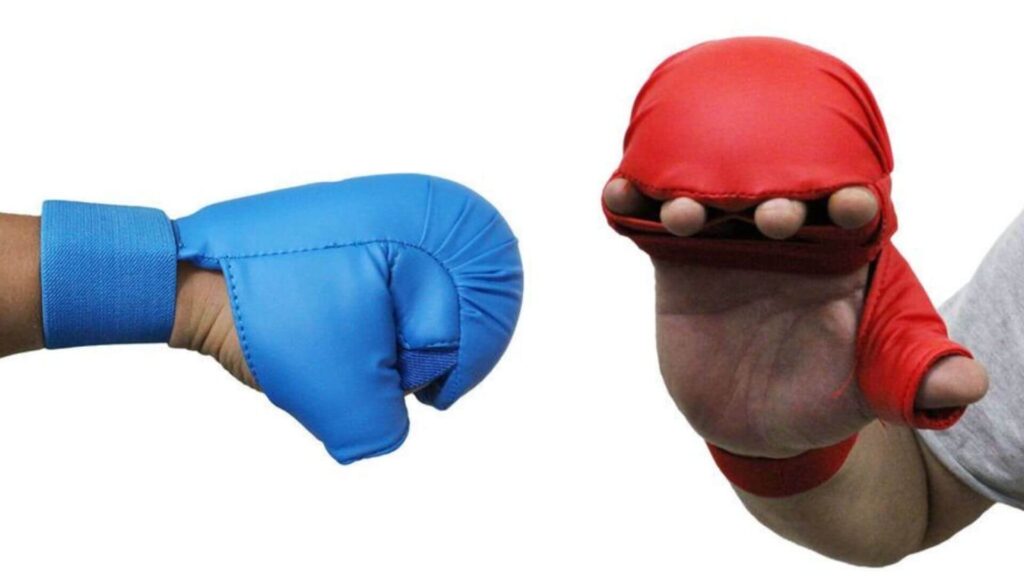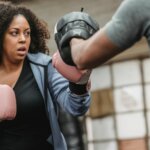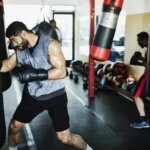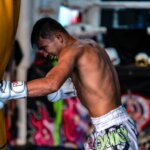Wondering if you should join karate classes soon?
Karate is one of the most popular forms of martial arts, and in 2021, it even debuted in the Olympic Games Tokyo 2020. However, many of us are familiar with the sport due to Hollywood films providing an oversimplified view.
In reality, like any other sport, karate also demands different pieces of essential equipment to ensure safety and improve your skills. Karate initially doesn’t require you to spend on it. Still, the list will grow as you get better at the sport.
Hence, we’ve developed this comprehensive guide on karate training equipment usually required while learning this martial art form. Remember that your sensei (the karate teacher) may have their list of preferred equipment. So, always run your options by them before getting any item.
Now, without further delay, let’s jump into it!
Karate Training Equipment Guide

Things To Remember While Buying Karate Equipment
Before discussing various equipment, we would like to draw your attention to some essential points. As you are about to invest in some serious martial arts gear, these points will work as a guide to help you make the right decision. Additionally, you can also ask your sensei for valuable tips.
1. Quality
Karate, like most other sports, demands rough usage. Hence, it won’t be an excellent idea to buy something that’s not durable. As safety is always a concern with karate, you want to purchase gear that provides adequate protection.
This point is especially valid for headgear or mouthguards, as low-quality items may leave you with serious injuries. So, be sure to look for the best quality pieces. Additionally, checking for proper licensing of a brand often ensures high-quality gear.
2. Proper Fit
Many gears go on your body in karate, making the fit an essential part of selecting these items. While getting a gi (karate uniform), you have to make sure that it fits your body well. An ill-fitting gi may hinder your performance or make you uncomfortable in the class.
Similarly, the fit is also crucial for choosing protective gears. Even a simple item like gloves should have the needed flexibility. Someone who needs special sizes should always consult with experienced karate artists before purchasing their equipment.
3. Made For Karate
A common mistake made while buying equipment is to get the wrong one. Because many martial arts have similar gear lists, it might be unclear which you need to buy while browsing through the items.
Hence, look for the word karate while checking out a product’s specifications to ensure that it will work for the art. Further, karate and taekwondo gears are often alike and might be used interchangeably. So, do proper research before settling for a piece of equipment.
Must-have Karate Training Equipment
1. Uniform
When it comes to karate, most of us know its typical white uniform worn by the karate practitioners. The official name for this traditional karate uniform is “gi.” Karate uniforms usually consist of two pieces, a long-sleeved front open shirt and a pair of full pants.
The trainees will either need to wear a blue or a white gi. Their sensei will determine the choice. It also comes in different weights and is used according to the occasion. Such as, the lightweight gi is worn by children and trainees, whereas professional performers wear heavyweight uniforms during outdoor displays that don’t include fighting. You can purchase karate uniforms from most sports shops.
2. Belt
The second most common equipment or accessory of karate is the belt, also known as the “obi.” This piece of cloth should be able to go twice around your body as it’s tied to the belly.
As most of us know, this belt has specific colours that define the skill level of a karate practitioner. Beginners wear the white, yellow, and orange obis, while intermediate trainees wear blue, green, and purple belts. Similarly, the brown, red and black obis are for professional and experienced athletes.

3. Chest Protectors/Armours
To protect you against any accidental blows, the chest protector is pretty essential in karate. You might not need it on the preliminary training days, but it will become necessary as your skill advances.
These protectors have enough flexibility to let your body move while fighting. Regarding the design, you will need to make a conscious choice based on the level of protection. Also, some chest protectors may extend to the back and sides to behave like armour.
4. Gloves And Other Hand-gear
There’s a lot of hand action in a contact sport like karate, and gloves come as a blessing to protect your hands. Without gloves, a trainee may quickly develop sprains or broken bones in their hand or fingers.
Even though these gloves may look similar to the boxing gloves, they are much smaller. Another commonly used gear is the handguards that also protect your fists. However, these are usually fingerless rather than fully covered like most gloves.

5. Headgear
The next protective equipment that every karate trainee should have is proper headgear. This flexible and well-padded gear is especially vital for those who participate in sparring. Unlike what we see on TV screens, even a slight kick or punch to the head can do a lot of damage.
Hence, this protective headgear is designed to cover the portion from the top of the head to your jaws. This ensures that a trainee can easily avoid concussions and other head injuries.
6. Mouthguard
Like the headgear, the mouthguard helps protect your teeth and gums from any accidental blows. However, the only difference lies in its usage, as the mouthguard goes inside your mouth. Hence, it’s crucial to get an item that is safe for the body.
Some people don’t deem this necessary equipment, but it’s pretty helpful for those who participate in sparring.

7. Jockstrap/Groin Protectors
The groin region is one of the most sensitive parts of our body, and even a single blow to this area can lead to lasting injuries. Hence, those trainees who actively take part in sparring or fighting have to wear jockstraps.
Unlike popular belief, jockstraps are necessary for both male and female participants. We recommend those jockstraps that protect along with a layer of padding. Also, check that the elastic band isn’t too tight for you to ensure comfort.
8. Other Protection Equipments
As it’s a high-contact sport, karate requires the trainees to wear more protective gear. This might not be necessary for someone who has just joined a school, but participants who are already into sparring will need a few of them.
Hence, hand and leg protection gears are essential for sparring events to protect your body against accidental hits. Some participants may also need to get protective shoes if performing on uneven ground.
Many participants even wear an added rib guard during certain events. If you have been promoted to the advanced levels, ask your sensei or master about getting these protective gears.
9. Weapons
We wouldn’t spend much time on this topic, but advanced trainees often use weapons like nunchakus, bokken, and bo staffs. As it requires unhindered dedication and practice, many karate trainees prefer customised weapons. Foam versions of karate weapons used in martial arts training, such as Nunchaku, enable students to practice with traditional martial arts weapons without causing harm to themselves or others.Also, your sensei will usually recommend practising with a single weapon at a time.
If your kids have started using weapons while searching for the gear, look for kid’s versions that aren’t toys.

Time To Start Karate!
We have almost come to the end of this guide on karate equipment. But, before going away, there were some things that we should discuss.
As you might have noticed, we have included a few advanced pieces of equipment in this guide, and it’s because one day you will surely rise to that position. And having a go-to list helps as an easy reference before purchasing the items.
Besides, you might know that there are various forms of karate. Hence, the necessary equipment will often depend on the art form you are practising. As a beginner trainee, you will only need the gi and the obi to enter and participate in a class.
With that, we would like to end this guide. Make sure to let us know if you have questions regarding any equipment. We will try to get back to you as soon as possible.
Till then, goodbye and stay healthy!






